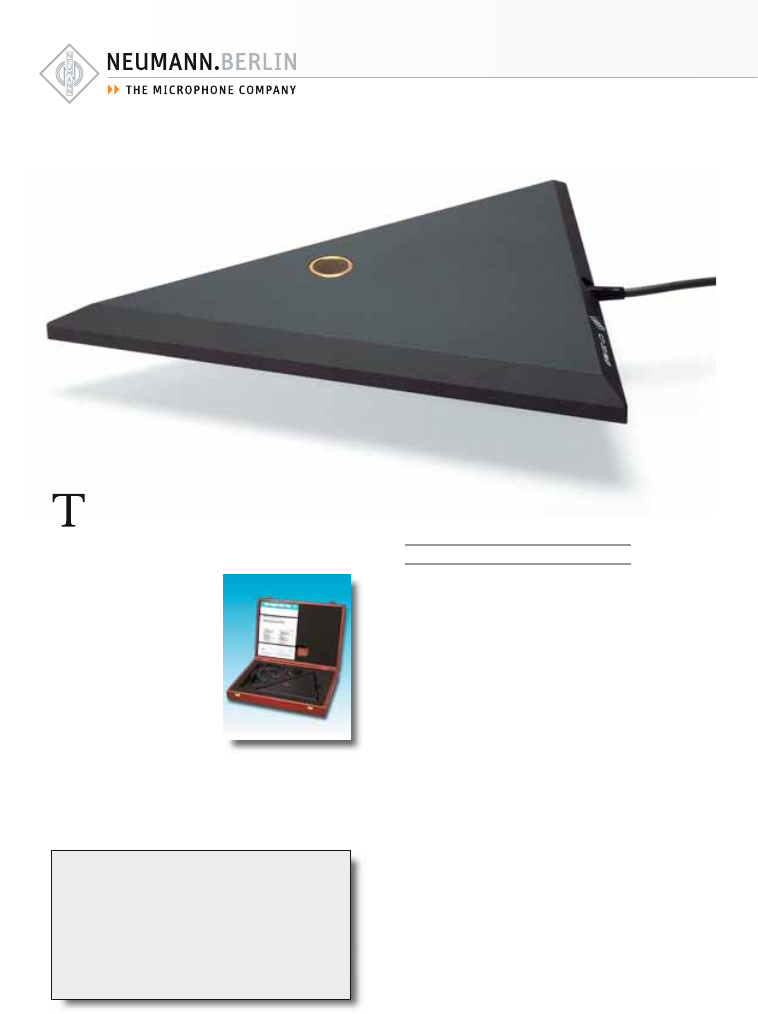
124
Features
• Boundary layer microphone
• Pressure transducer
• Frequency independent
hemispherical directional
characteristic
• Identical diffuse- and
free-field response
• No angle dependent
coloration through patented
triangular form
• No comb filter effects
• Insensitive to structure-borne
noise
Background
Boundary-layer microphones are generally char-
acterized by the following features:
They have an identical flat frequency response
in the diffuse-field and free-field;
They have a hemispherical polar pattern, in-
dependent of the frequency;
They have a 6 dB higher output level through
pressure doubling at the boundary surface.
Until recently, neither the potential of identi-
cal diffuse- and free-field response, nor the
ideal hemispherical polar patterns throughout
the entire frequency range have been achieved
by any known boundary-layer microphone. Cir-
cular, square, or rectangular plates were used
to mount the acoustic transducer and to pro-
vide the “live” sound reflecting surface for
pressure doubling at high frequencies.
However, such shapes have disadvantages:
The sound pressure level at the position of
the transducer depends on the frequency and
the incidence angle. The incoming primary
sound field is superimposed upon the second-
ary sound field resulting from diffraction at the
edges of the plate. As a result, boundary-layer
microphones using circular, square or rectan-
gular shaped plates generate linear distortion,
such as comb filter effects, of frequency and
polar response.
he GFM 132 is a boundary layer micro-
phone. Through computer simulation Neu-
mann optimized the design to be free of any
comb filter effects due to reflec-
tions, typical of other such mi-
crophones.
The smooth frequency respon-
se for all angles of incidence ex-
hibits a rise in the upper fre-
quency range. This assures that
all sound sources, even distant
ones, will be recorded with cla-
rity and presence.
Therefore, typical applications
are for live recordings, such as
in the orchestra pit of opera
houses, theaters, and on stage.
The back of the microphone has non-slip pads
for its use in a horizontal or inclined positi-
on, and holes for wall suspension. It is supp-
lied with a wooden case and a wind screen.


















